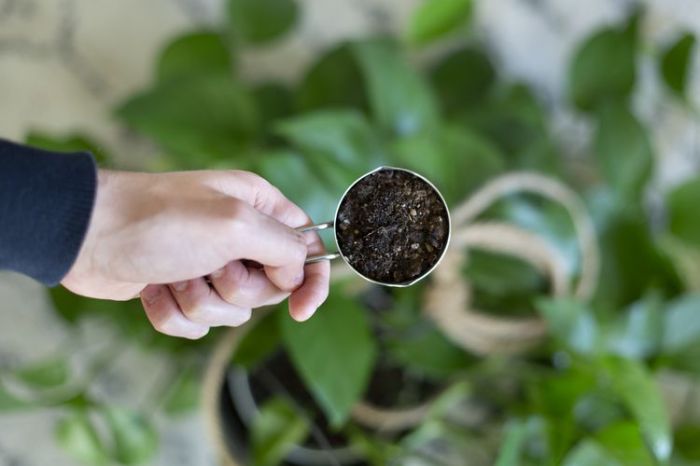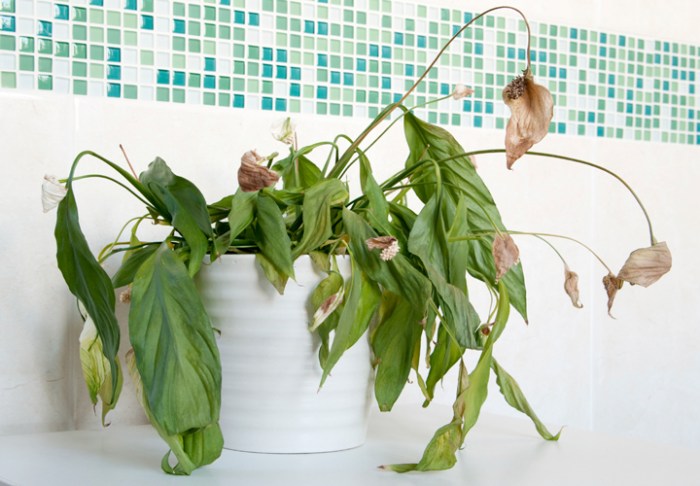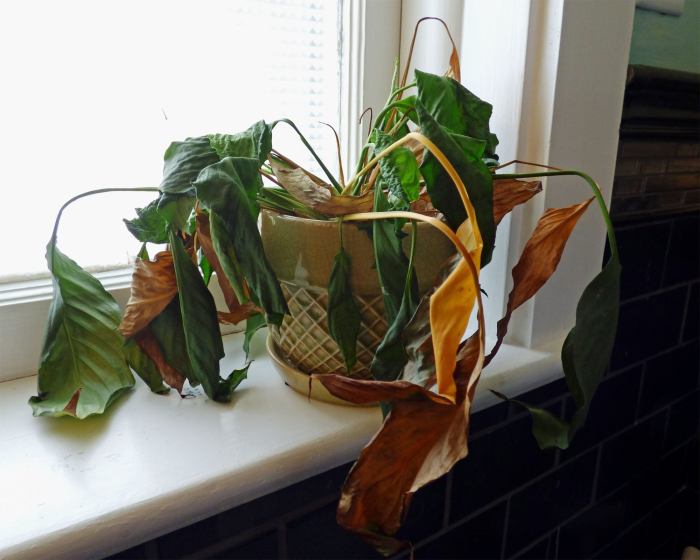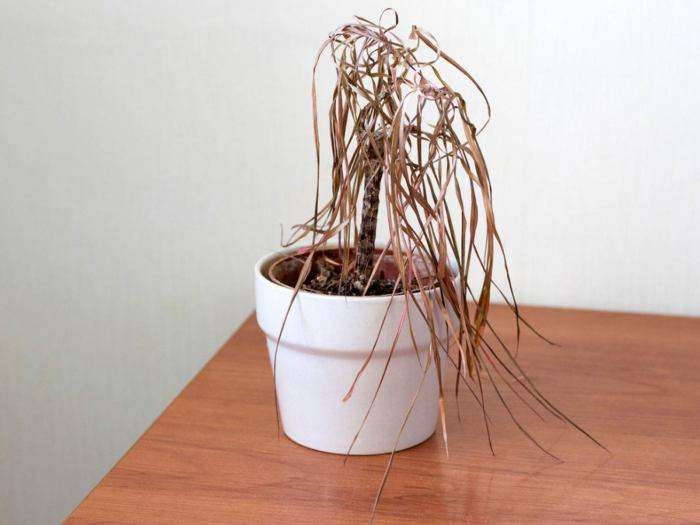Why do my hanging plants keep dying? This question plagues many plant enthusiasts, leaving them frustrated and disheartened. But fear not, for this comprehensive guide delves into the root causes of this common issue, empowering you with the knowledge to revive and thrive.
From overwatering to nutrient deficiencies, we’ll explore the factors that contribute to the demise of hanging plants. With practical tips and expert advice, you’ll gain the insights necessary to transform your struggling plants into thriving oases.
Overwatering

Excessive watering is a common cause of death for hanging plants. When a plant is overwatered, its roots become waterlogged and cannot absorb oxygen. This can lead to root rot, which is a fatal condition.
There are several signs that a hanging plant is overwatered. These include:
- Yellowing or wilting leaves
- Drooping stems
- Mushy or soft roots
- Waterlogged soil
The best way to prevent overwatering is to water your plants only when they need it. The frequency of watering will vary depending on the type of plant, the size of the pot, and the environmental conditions. As a general rule, it is best to water your plants deeply and infrequently, rather than shallowly and frequently.
Adjusting Watering Frequency
The best way to determine when your hanging plant needs water is to check the soil. Stick your finger in the soil up to the first knuckle. If the soil is dry, it is time to water your plant. If the soil is still moist, wait a few days before watering it again.
You can also adjust the watering frequency based on the type of plant. For example, succulents need less water than ferns. You can also adjust the watering frequency based on the environmental conditions. For example, plants that are in a warm, dry environment will need to be watered more frequently than plants that are in a cool, humid environment.
By following these tips, you can help prevent overwatering and keep your hanging plants healthy and thriving.
Underwatering: Why Do My Hanging Plants Keep Dying

Underwatering is another common cause of hanging plant death. It occurs when the plant does not receive enough water to meet its needs. Signs of underwatering include wilting, dry soil, and brown or crispy leaves. The frequency of watering will vary depending on the type of plant, the size of the pot, and the environmental conditions.
As a general rule, most hanging plants should be watered when the top inch of soil feels dry to the touch.
Reviving Underwatered Hanging Plants
If you suspect your hanging plant is underwatered, the first step is to give it a thorough watering. Allow the water to soak into the soil and drain out the bottom of the pot. Once the plant has been watered, place it in a warm, humid environment and mist the leaves regularly.
In most cases, the plant will recover within a few days. However, if the plant is severely underwatered, it may take several weeks or even months to fully recover.
Light Conditions

Hanging plants require optimal light conditions to thrive. Insufficient or excessive light can lead to various health issues. Understanding the ideal light requirements for different types of hanging plants is crucial for their well-being.
Low-Light Plants, Why do my hanging plants keep dying
- Ferns (e.g., Boston fern, maidenhair fern)
- Snake plants (e.g., mother-in-law’s tongue)
- ZZ plants (e.g., Zamioculcas zamiifolia)
These plants prefer shaded areas or indirect sunlight and can tolerate low-light conditions.
Medium-Light Plants
- Pothos (e.g., golden pothos, marble queen)
- Spider plants (e.g., Chlorophytum comosum)
- Peace lilies (e.g., Spathiphyllum wallisii)
These plants thrive in bright, indirect light and can handle some direct sunlight during the morning or evening.
High-Light Plants
- Succulents (e.g., jade plant, aloe vera)
- Cacti (e.g., barrel cactus, golden barrel cactus)
- Bougainvillea (e.g., paper flower)
These plants require direct sunlight for at least 6 hours per day and can withstand high-light conditions.
Adjusting Light Exposure
To ensure optimal light conditions for hanging plants, consider the following tips:
- Use sheer curtains or blinds to filter direct sunlight.
- Place low-light plants in north-facing windows or shaded areas.
- Move high-light plants closer to south-facing windows or outdoor locations with ample sunlight.
- Consider using grow lights to supplement natural light during low-light seasons.
Nutrient Deficiencies
Nutrient deficiencies are a common problem for hanging plants. They can be caused by a number of factors, including:* Overwatering: Overwatering can leach nutrients from the soil, leaving plants deficient.
Underwatering
Underwatering can also cause nutrient deficiencies, as plants need water to absorb nutrients from the soil.
Poor soil quality
If you’re wondering why your hanging plants keep dying, one possible reason could be cold weather. Hanging plants are particularly vulnerable to cold temperatures because they’re often exposed to drafts and fluctuations in temperature. Can hanging plants survive cold weather ? The answer is yes, but you’ll need to take some precautions to protect them.
Moving your plants indoors or to a sheltered area during the winter months is a good way to keep them from freezing.
Hanging plants are often grown in small pots with limited soil, which can quickly become depleted of nutrients.
Lack of fertilization
Hanging plants need to be fertilized regularly to ensure they have access to the nutrients they need.Nutrient deficiencies can cause a variety of symptoms in hanging plants, including:* Stunted growth
- Yellowing leaves
- Brown or black spots on leaves
- Drooping leaves
- Poor flowering
To diagnose a nutrient deficiency, it is important to first rule out other potential causes of the symptoms, such as overwatering, underwatering, or light conditions. Once other causes have been ruled out, you can begin to test for nutrient deficiencies.There
are a number of ways to test for nutrient deficiencies, including:* Soil testing: Soil testing can be done by sending a sample of your soil to a laboratory for analysis. This is the most accurate way to determine nutrient deficiencies, but it can also be expensive.
Plant tissue testing
Plant tissue testing involves taking a sample of plant tissue and sending it to a laboratory for analysis. This is a less accurate method than soil testing, but it can be more convenient.
Visual inspection
Visual inspection of your plants can also help you identify nutrient deficiencies. Look for the symptoms listed above, and compare them to the symptoms of specific nutrient deficiencies.Once you have identified a nutrient deficiency, you can begin to correct it.
Determining the reasons behind dying hanging plants can be a challenging task. However, consider exploring bunnings artificial hanging plants as an alternative solution. While artificial plants may not offer the same level of natural beauty, they eliminate the concerns associated with keeping live plants alive, providing a hassle-free way to enhance your indoor space.
The best way to correct a nutrient deficiency is to use a fertilizer that is specifically designed for hanging plants. These fertilizers contain the nutrients that hanging plants need in the correct proportions.When applying fertilizer, it is important to follow the directions on the package.
Why do my hanging plants keep dying? If you’re struggling to keep your hanging plants alive, you’re not alone. Hanging plants can be a beautiful addition to any home, but they can also be challenging to care for. One of the most common problems with hanging plants is that they don’t get enough light.
Hanging plants need bright, indirect light, but they can’t tolerate direct sunlight. If your hanging plant is getting too much sun, it will start to wilt and turn brown. You can find more tips on where to hanging plants to get the best light and avoid this issue, preventing your hanging plants from dying.
Over-fertilizing can damage your plants, so it is always better to err on the side of caution.By following these tips, you can help prevent and correct nutrient deficiencies in your hanging plants.
Benefits of Using Fertilizers Specifically Designed for Hanging Plants
Fertilizers specifically designed for hanging plants offer a number of benefits, including:* They contain the nutrients that hanging plants need in the correct proportions.
- They are formulated to be easily absorbed by hanging plants.
- They are less likely to cause over-fertilization.
Using a fertilizer that is specifically designed for hanging plants is the best way to ensure that your plants get the nutrients they need to thrive.
Pests and Diseases

Hanging plants can be susceptible to various pests and diseases that can weaken or kill them. Identifying and treating these problems promptly is crucial to maintain the health of your plants.Common pests that can infest hanging plants include aphids, mealybugs, spider mites, and scale insects.
These pests can feed on plant sap, causing yellowing, wilting, and stunted growth.Diseases that can affect hanging plants include powdery mildew, botrytis, and root rot. Powdery mildew appears as a white or gray powdery substance on leaves, while botrytis causes soft, brown or gray lesions.
Root rot, caused by overwatering or poor drainage, leads to root decay and wilting.
Prevention and Treatment
Preventing pest and disease infestations is essential for the well-being of hanging plants. Ensure proper watering practices to avoid overwatering, which can lead to root rot. Provide adequate sunlight and ventilation to discourage fungal diseases. Regularly inspect plants for pests and treat infestations promptly with appropriate insecticides or fungicides.
Final Review
By understanding the unique needs of hanging plants and addressing their specific challenges, you can create a flourishing indoor or outdoor sanctuary. So, let’s embark on this journey of plant restoration and uncover the secrets to keeping your hanging plants alive and vibrant.
Quick FAQs
What are the signs of overwatering in hanging plants?
Yellowing or wilting leaves, soggy soil, root rot
How often should I water my hanging plants?
It depends on the plant species, environmental conditions, and pot size. Check the soil moisture before watering.
What are the common pests that affect hanging plants?
Aphids, mealybugs, spider mites, whiteflies